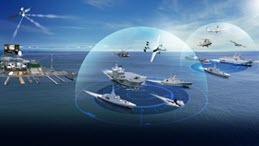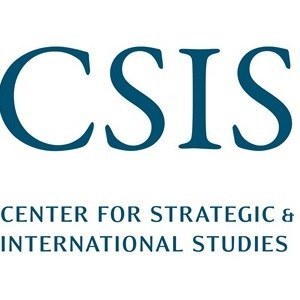We may or may not be in the midst of a RMA, but Network Centric Warfare (NCW) is a key capability (and vulnerability) for modern armed forces. Below are a few short readings and videos. The first addresses the nature of Network Centric Warfare; the second is a promotional video for Rafael’s “Fire Weaver” battlefield networking system. As critical thinkers, we need to consider multiple sides of issues. The article by Major General (RET) Robert H. Scales from 2005 challenges all the claims about network centric warfare in an urban insurgent environment such as Iraq. The article from the Center for Strategic and International Studies focuses on vulnerabilities of network centric forces and how resilience strategies can mitigate such vulnerabilities. The optional video from the Disruption Network Lab looks at the ethical issues of NCW and poses ethical questions and if the whole concept is really benefitting humanity.
As you read the following articles and watch the videos, do some critical thinking and:
- evaluate the arguments for and against the importance of NCW;
- analyze how the arguments stack up against your experience with NCW;
- analyze how all this talk of NCW impacts the field of geospatial intelligence, and specifically the role, mission, political position, and funding of the NGA.

Right: Major Allan Foskett, Chief of Highway Traffic, and SGT Juan Franco of the 450th Movement Control Battalion are shown preparing to enter Iraq
Blue Force Tracker allows Soldiers to maintain situational awareness on the battlefield by knowing their own location, the location of friendly forces (the blue forces), plotting enemy locations, and communicating this all over a network to maintain a common operating picture or COP. The system uses digital maps, remotely sensed imagery, and global positioning system data that are all geospatial intelligence products or techniques.
In the image on the right, MAJ Foskett has his Movement Tracking System (MTS) up. MTS is a satellite based system with a digital map that can be zoomed in and out. A global positioning system transmits the unit location to other users, and the system overlays all or selected users on the digital map. The system also allows for text messaging via satellite, thus overcoming the limitations of terrestrial radio systems. MTS allowed the 450th Movement Control Battalion to maintain in-transit visibility of critical logistics convoys, and to communicate over long distances. Highway Regulating Teams patrolling the main supply route often were able to call in medical evacuation helicopters for units out of radio contact, thus saving many lives. SGT Franco is a digital graphic designer. He took locational data obtained by GPS equipped Highway Regulation Teams and produced a simplified strip map of all the theater logistics nodes in Kuwait and Iraq. His map was widely reproduced and distributed. The map enabled both military and contracted logisticians to support the force.

Read
What is Network-Centric Warfare?
McConoly, R. (2021, June 21). What is Network-Centric Warfare?. Naval Post. https://navalpost.medium.com/what-is-network-centric-warfare-953d91f2a029
Now watch with a critical eye this advertisement from defense contractor Rafael for their Fire Weaver system.
Video: FIRE WEAVER™ - A networked combat system (urban scenario) (4:33)
[Music]
As we all know, today's battlefields are more challenging than ever. We are required to fight in complex urban areas amongst civilian populations and to handle time-critical targets.
The biggest challenge is to close the sensor shooter loops in a very short time, accurately, effectively and efficiently. Today, we at Rafael are proud to present the revolutionary solution to these challenges. Fire Weaver, the world's most mature network detect system. See how in real-time action, the sensors detect and identify the targets.
Fire Weaver selects the optimal shooters and marks the targets to the shooter's site. As a result, all the attack processes are completed simultaneously in an unprecedentedly short time, as we are seeing different shooters from different locations simultaneously neutralizing different targets within a few seconds. This can only be achieved today with Fire Weaver.
Now, let's understand step by step how Fire Weaver actually works. As we see, all the forces are connected through a radio network.
[Music]
The attack process begins with a variety of sensors gathering information in the battlefield. The sensor identifies the target, classifies it and disseminates it through the system.
In the same way, all the other sensors detect and classify the information and disseminate it through the net to all the connected participants.
[Music]
Thanks to Rafael's advanced Computer Vision Technologies, each participant receives very accurate augmentation symbols, so they all see the same targets regardless of their position.
Once the sensors detect and classify the targets, the Fire Weaver core, the brain of the system, goes immediately into action. It calculates all the data and within seconds it chooses the optimal shooter for each target based on such parameters as location, line of sight effectiveness and current ammo status. All that in accordance to the Fire policy. The process can be performed automatically or controlled according to the commander's decision.
As you see, the target is sent from the sensor to the shooter, who sees the target from his point of view on his sight.
The targets are neutralized simultaneously in a very short time with maximum precision, while minimizing damage and avoiding friendly.
Fire Weaver system enables other shooters to neutralize further targets. According to the same operational process, Fire Weaver uses three targeting languages, geocordinate Laser Designation, and Electro Optical Pixel. The system has already been tested in the field, including many to many and live fire scenarios. For the first time, With Fire Weaver, the sensor to shooter loop is closed in seconds instead of minutes.
[Music]
Now read this commentary by retired Major General Robert Scales. His perspective derives from operations in Iraq in 2003-2004. Are his observations in this 2005 article still applicable today?
Read
Human Intel vs. Technology
Scales. R.H. (2005, February 2). Human intel vs. technology. The Washington Times. https://www.washingtontimes.com/news/2005/feb/2/20050202-102009-9150r/

Read
Battle Networks and the Future Force, Part 2: Operational Challenges and Acquisition Opportunities
Harrison, T. ( 2021, November). Battle Networks and the Future Force, Part 2: Operational Challenges and Acquisition Opportunities. CSIS Briefs. https://www.csis.org/analysis/battle-networks-and-future-force-0
Government and military practitioners tend to take a very technical/operational approach to NCW. Seldom do they ask “just because we can do it, should we do it?” This optional video takes a critical look at NCW and includes presentations by expert whistleblowers.
The Keynote address in the following optional video was given by Lisa Ling (Whistleblower, Former Technical Sergeant, US Air Force Drone Surveillance Programme, US) and Cian Westmoreland (Whistleblower, Former US Air Force Drone Technician, US). It was moderated by Daniel Eriksson (CEO of Transparency International, SE/DE). Distribution Network Lab describes the video like this in the video description.
"This keynote presentation introduces what Lisa Ling and Cian Westmoreland have come to call the “Kill Cloud,” a rapidly growing networked infrastructure of global reach with the primary intent of dominating every spectrum of warfare. There is a need for a critical analysis of how the “Kill Cloud” operates, from its ideological underpinnings, its ambitions, to the technological approach being pursued to achieve global military dominance over all battlespace dimensions including, space, cyberspace, and the electromagnetic spectrum itself. Modern network centric warfare has been hidden behind the captivating image of the drone, yet these systems are vastly more complex, insidious, ubiquitous, and inaccurate than the public is aware, and its colonial underpinnings continue to bring endless war to societies across the globe. The Kill Cloud has emerged as an immense and evolving system of systems hastening the expansion of the Global War on Terror. This talk pays close attention to the US military drone programme’s contribution to the framing and evolution of modern network centric war. This Kill Cloud has far-reaching consequences beyond those of what have been traditionally considered in warfare. Read the full chapter in the book Whistleblowing for Change."
Optional Video
KEYNOTE: The Kill Cloud: Real World Implications of Network Centric Warfare (1 hour, 39 minutes)
Go to Keynote Transcript